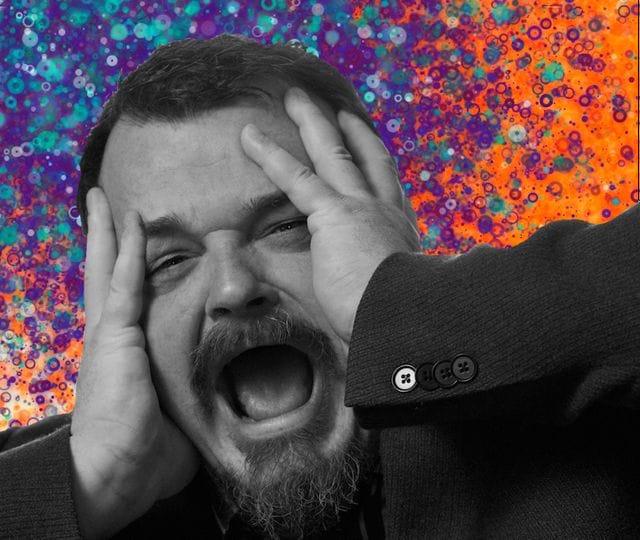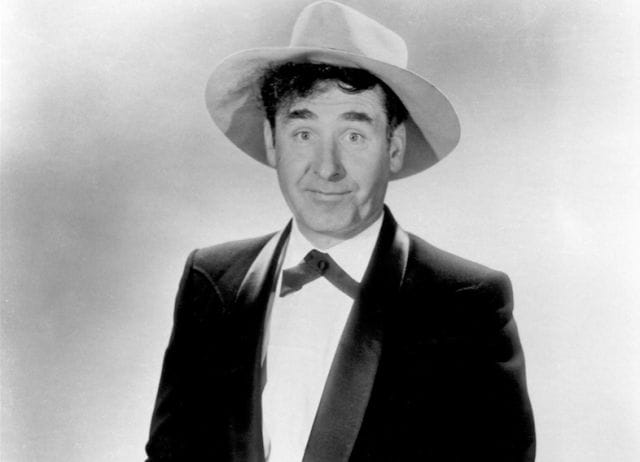
The Wilhelm Scream; via Internet Archive

Chances are, you’ve heard the Wilhelm Scream — but you probably haven’t heard of it.
Since being recorded in the 1950s, the sound effect — an overly-dramatic, desperate yelp — has become a staple in some of Hollywood biggest films. It is the choice cry of Stormtroopers falling to their death in Star Wars; it is emitted by Buzz Lightyear as he is sent careening out of a window in Toy Story; it is cried out as Jafar lifts the palace in Aladdin, and uttered by a man who’s being crushed by a monster in Avatar.
The Wilhelm Scream has made an appearance in more than 300 films, television shows, and video games, and has cemented itself as the inside joke of the industry’s best sound editors. Most frequently used when someone falls to his death, is shot, or is thrown aside by an explosion, the Wilhelm is often cited as cinema’s most-used sound clip.
But how (and why) did such a horrible sound effect become so ubiquitous?
***
It all began in 1951, during the post-production of Distant Drums, a Western starring Gary Cooper. In the film, there was a scene in which a soldier was attacked by an alligator while wading through a swamp. As was (and still is) practice, many sound effects were recorded in a studio after filming, then mixed into the final edit.
To fulfill that particular scene’s sound direction — “man gets bit by an alligator, and he screams” — the film’s producers called in a voice actor; in rapid, one-take segments, the actor recorded six “pained screams.” Ultimately, scream #4 was chosen as the most appropriate for the scene, and made its debut on the silver screen. (Note: the other recordings have also been used from time to time, but #4 was the most enduring).
Though there is no conclusive proof of who recorded the scream, several people contend that it was most likely the work of a musician named Sheb Wooley, who is best known for recording the 50s hit, “Purple People Eater.” Written paperwork from Warner Brothers’ Distant Drum recording session list Wooley as a performer that day, and in a later interview, his wife recalled that “He always used to joke about how he was so great about screaming and dying in films.”

Sheb Wooley, the man who likely recorded the “Wilhelm Scream”
Along with other recordings, the scream was archived in a Hollywood sound effects library.
Over the next 20 years, the scream was sparingly resurrected for use in Warner Brothers films — so infrequently, that viewers of Distant Drums never realized they’d heard the same sound effect before. By the mid-70s, it had faded out of use.
Around this time, a young technician named Ben Burtt was tasked with finding sound effects for use in George Lucas’ Star Wars. While digging around in Warner Brothers’ archives, he came across the original recording of the scream. After realizing that the effect had been used in the 1953 Western, “Charge at Feather River” (in which a character named Wilhelm is shot in the leg by an arrow), Burtt dubbed it the “Wilhelm Scream,” and decided it was too good not to use.
When Star Wars debuted in 1977, it included a scene in which a Stormtrooper was blasted off a ledge with a ray gun. He emits, of course, a hearty Wilhelm Scream.
After being featured in Star Wars, the Wilhelm Scream became a bit of a running joke among Burtt and his sound producer buds. After it was re-archived at Skywalker Sound, Burtt used it in the Indiana Jones films (Raiders of the Lost Ark, 1981; Temple of Doom, 1984), More American Graffiti (1979), and Willow (1988), among others.
An overwhelming Wilhelm Scream compilation
From the mid-1980s onward, various sound producers integrated the Wilhelm Scream into their films, and it exploded in popularity. The scream appeared in Disney movies (Beauty and the Beast, Aladdin, A Goofy Movie), thrillers (Poltergeist, Batman Returns, Planet of the Apes), and even romantic comedies (Wet Hot American Summer, Life or Something Like It). It simply couldn’t be stopped.
Today, the Wilhelm has snuck its way into more than 300 television shows, video games, commercials, and films — including those directed by the likes of Quentin Tarantino (Reservoir Dogs, Kill Bill Volume 1, Inglorious Bastards), Peter Jackson (Lord of the Rings), and Pete Docter (Up, Monsters Inc.).
“Although it has never been available in any commercial sound effects library,” writes Wilhelm historian Steve Lee, “the recording has made it around the sound community through editors who appreciate its history.”
Below, we’ve compiled a list of all known Wilhelm Scream appearances (of course, there are likely many others that have yet to be documented). It’s likely that one of your favorite films includes one:
Sources: IMDB, Hollywood Lost and Found; Chart compiled by Priceonomics
Despite its ubiquity, the Wilhelm Scream is relatively unknown to the majority of the public.
In a Reddit discussion on the Wilhelm Scream, one user speculates that “less than 5% of the film-viewing public would recognize the scream, and less than 1% could identify it by name,” and adds that only “film buffs” pick it out and find it annoying. Indeed, among self-proclaimed “film nerds,” the Wilhelm Scream is detested.
“Dear Hollywood: please stop using the Wilhelm Scream,” begs a film blogger at Mighty God King:
“Whenever I hear a Wilhelm Scream I am taken out of the movie experience. My suspense of disbelief ends and I am just a guy sitting in a movie theatre who realized he just heard the same damn scream for the umpteenth time, because I recognize it. Every time.
When I watch a movie, I want to be thrilled during the fight scenes and exciting bits where a Wilhelm Scream might conceivably be heard. I want to experience that “ooooch” feeling when somebody really gets it, and if that moment is punctuated with a Wilhelm Scream then I’m not going to get that feeling. Instead, I’m just going to be thinking “oh, a Wilhelm Scream. Huh.”
Today’s movie producers seem to have taken note: though the Wilhelm Scream is still in use (most recently featured in 2014’s 22 Jump Street), its appearances in film have dramatically waned:

Data via IMDB, Hollywood Lost and Found; Graphic via Priceonomics
From this list, one can see the Wilhelm Scream’s gradual ascension in popularity, beginning in the mid-1980s. Surprisingly though, the effect seemed to have hit its stride from 2000 to 2010, before petering off back into relative disuse.
This seems to be a symptom of the Internet.
Between 2005 and 2007 (the peak of Wilhelm use), Facebook and YouTube rose in popularity. After a Wilhelm Scream compilation video went viral in 2006 and got millions of views, the sound effect became something of a meme on the Internet.
What was once an underground inside joke among sound producers turned into one of the most frequently-used sound effects in the history of cinema. But, as our graph shows, it appears the quirky soundbite is on its way out.
“[The Wilhelm] was something that was so below the radar, that the only people who noticed were the ones who knew,” reminisces Ben Burtt, the man who rediscovered the scream nearly 45 years ago. “Now that it’s above ground, it isn’t nearly as much fun to use anymore.”

This post was written by Zachary Crockett. You can follow him on Twitter here.
To get occasional notifications when we write blog posts, please sign up for our email list.



